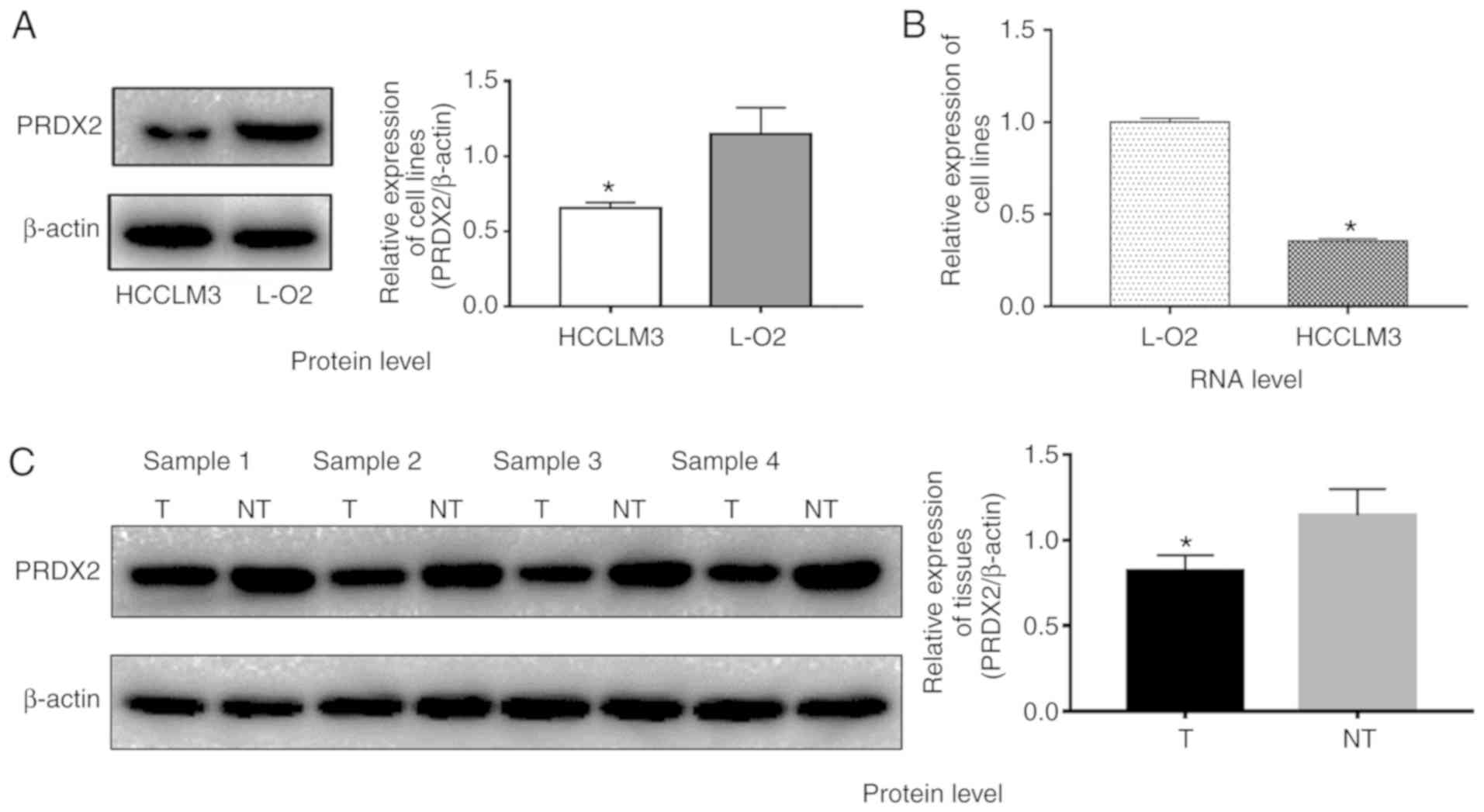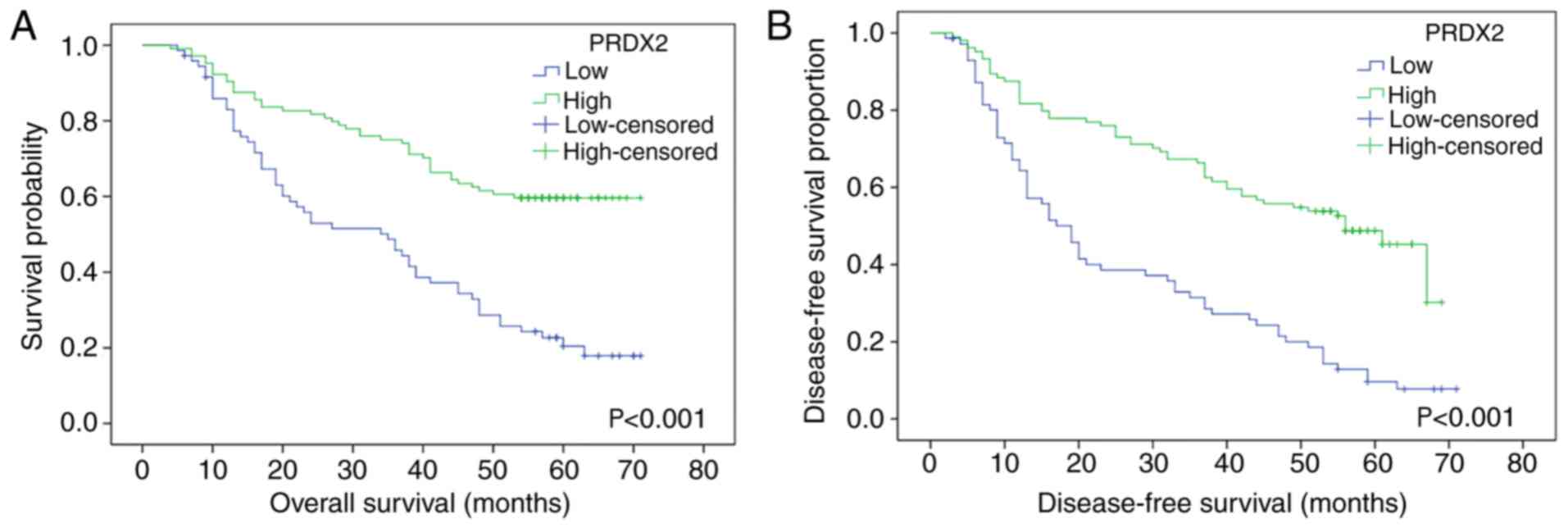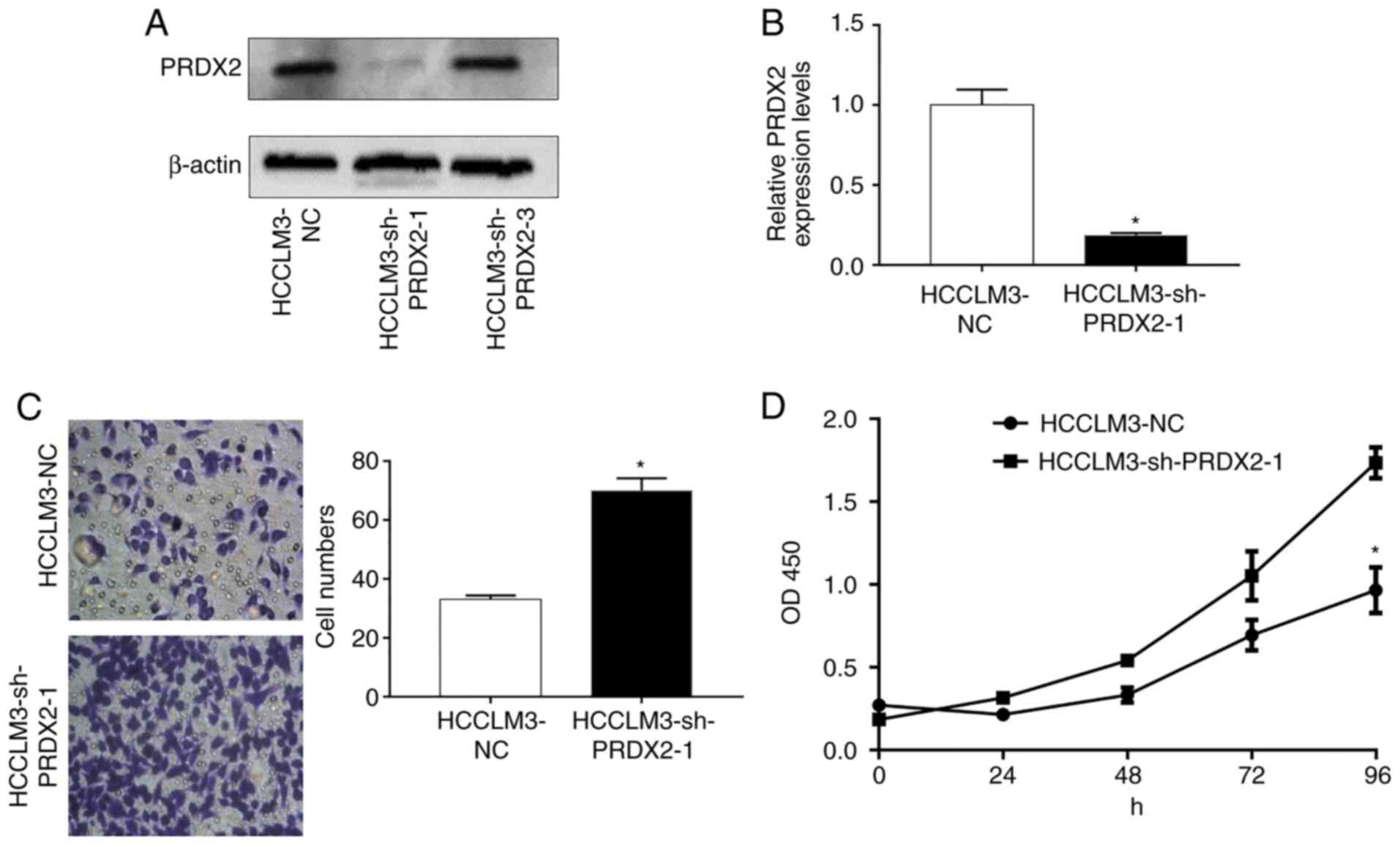|
1
|
Dhanasekaran R, Limaye A and Cabrera R:
Hepatocellular carcinoma: Current trends in worldwide epidemiology,
risk factors, diagnosis, and therapeutics. Hepat Med. 4:19–37.
2012.PubMed/NCBI
|
|
2
|
Siegel RL, Miller KD and Jemal A: Cancer
statistics, 2017. CA Cancer J Clin. 67:7–30. 2017. View Article : Google Scholar : PubMed/NCBI
|
|
3
|
Chen W, Zheng R, Baade PD, Zhang S, Zeng
H, Bray F, Jemal A, Yu XQ and He J: Cancer statistics in China,
2015. CA Cancer J Clin. 66:115–132. 2016. View Article : Google Scholar : PubMed/NCBI
|
|
4
|
Ikeda M, Morizane C, Ueno M, Okusaka T,
Ishii H and Furuse J: Chemotherapy for hepatocellular carcinoma:
Current status and future perspectives. J Clin Oncol. 48:103–114.
2018.
|
|
5
|
Behne T and Copur MS: Biomarkers for
hepatocellular carcinoma. Int J Hepatol 2012. 8590762012.
|
|
6
|
Zhao Y, Gao Q, Pei L, Wang C, Jin L and
Liao F: Current status and future prospects of biomarkers in the
diagnosis of hepatocellular carcinoma. Int J Biol Markers.
32:e361–e369. 2017. View Article : Google Scholar : PubMed/NCBI
|
|
7
|
Heimbach JK: Overview of the updated AASLD
guidelines for the management of HCC. Gastroenterol Hepatol.
13:751–753. 2017.
|
|
8
|
Bryk R, Griffin P and Nathan C:
Peroxynitrite reductase activity of bacterial peroxiredoxins.
Nature. 407:211–215. 2000. View
Article : Google Scholar : PubMed/NCBI
|
|
9
|
Hillas PJ, del Alba FS, Oyarzabal J, Wilks
A and Ortiz De Montellano PR: The AhpC and AhpD antioxidant defense
system of mycobacterium tuberculosis. J Biol Chem. 275:18801–18809.
2000. View Article : Google Scholar : PubMed/NCBI
|
|
10
|
Trachootham D, Alexandre J and Huang P:
Targeting cancer cells by ROS-mediated mechanisms: A radical
therapeutic approach? Nat Rev Drug Discov. 8:579–591. 2009.
View Article : Google Scholar : PubMed/NCBI
|
|
11
|
Gorrini C, Harris IS and Mak TW:
Modulation of oxidative stress as an anticancer strategy. Nat Rev
Drug Discov. 12:931–947. 2013. View
Article : Google Scholar : PubMed/NCBI
|
|
12
|
Zhang S, Fu Z, Wei J, Guo J, Liu M and Du
K: Peroxiredoxin 2 is involved in vasculogenic mimicry formation by
targeting VEGFR2 activation in colorectal cancer. Med Oncol.
32:4142015. View Article : Google Scholar : PubMed/NCBI
|
|
13
|
Duan T, Fan K, Chen S, Yao Q, Zeng R, Hong
Z, Peng L, Shao Y and Yao B: Role of peroxiredoxin 2 in
H2O2-induced oxidative stress of primary
leydig cells. Mol Med Rep. 13:4807–4813. 2016. View Article : Google Scholar : PubMed/NCBI
|
|
14
|
Stresing V, Baltziskueta E, Rubio N,
Blanco J, Arriba MC, Valls J, Janier M, Clézardin P, Sanz-Pamplona
R, Nieva C, et al: Peroxiredoxin 2 specifically regulates the
oxidative and metabolic stress response of human metastatic breast
cancer cells in lungs. Oncogene. 32:724–735. 2013. View Article : Google Scholar : PubMed/NCBI
|
|
15
|
Wang R, Wei J, Zhang S, Wu X, Guo J, Liu
M, Du K, Xu J, Peng L, Lv Z, et al: Peroxiredoxin 2 is essential
for maintaining cancer stem cell-like phenotype through activation
of hedgehog signaling pathway in colon cancer. Oncotarget.
7:86816–86828. 2016. View Article : Google Scholar : PubMed/NCBI
|
|
16
|
Kalinina EV, Berezov TT, Shtil' AA,
Chernov NN, Glazunova VA, Novichkova MD and Nurmuradov NK:
Expression of peroxiredoxin 1, 2, 3, and 6 genes in cancer cells
during drug resistance formation. Bull Exp Biol Med. 153:878–881.
2012.(In English, Russian). View Article : Google Scholar : PubMed/NCBI
|
|
17
|
Zhou S, Han Q, Wang R, Li X, Wang Q, Wang
H, Wang J and Ma Y: PRDX2 protects hepatocellular carcinoma
SMMC-7721 cells from oxidative stress. Oncol Lett. 12:2217–2221.
2016. View Article : Google Scholar : PubMed/NCBI
|
|
18
|
Zhao S, Su G, Yang W, Yue P, Bai B, Lin Y,
Zhang J, Ba Y, Luo Z, Liu X, et al: Identification and comparison
of differentiation-related proteins in hepatocellular carcinoma
tissues by proteomics. Technol Cancer Res Treat. 16:1092–1101.
2017. View Article : Google Scholar : PubMed/NCBI
|
|
19
|
Zhou SL, Hu ZQ, Zhou ZJ, Dai Z, Wang Z,
Cao Y, Fan J, Huang XW and Zhou J: miR-28-5p-IL-34-macrophage
feedback loop modulates hepatocellular carcinoma metastasis.
Hepatology. 63:1560–1575. 2016. View Article : Google Scholar : PubMed/NCBI
|
|
20
|
Wu J, Lu Y, Qin A, Qiao Z and Jiang X:
Overexpression of RAB34 correlates with poor prognosis and tumor
progression in hepatocellular carcinoma. Oncol Rep. 38:2967–2974.
2017. View Article : Google Scholar : PubMed/NCBI
|
|
21
|
Livak KJ and Schmittgen TD: Analysis of
relative gene expression data using real-time quantitative PCR and
the 2ΔΔCT method. Methods. 25:402–408. 2001.
View Article : Google Scholar : PubMed/NCBI
|
|
22
|
Dong H, Zhu G, Tamada K, Flies DB, van
Deursen JM and Chen L: B7-H1 determines accumulation and deletion
of intrahepatic CD8+ T lymphocytes. Immunity.
20:327–336. 2004. View Article : Google Scholar : PubMed/NCBI
|
|
23
|
Diao S, Zhang JF, Wang H, He ML, Lin MC,
Chen Y and Kung HF: Proteomic identification of microRNA-122a
target proteins in hepatocellular carcinoma. Proteomics.
10:3723–3731. 2010. View Article : Google Scholar : PubMed/NCBI
|
|
24
|
Nicolussi A, D'Inzeo S, Capalbo C,
Giannini G and Coppa A: The role of peroxiredoxins in cancer. Mol
Clin Oncol. 6:139–153. 2017. View Article : Google Scholar : PubMed/NCBI
|
|
25
|
Park MH, Jo M, Kim YR, Lee CK and Hong JT:
Roles of peroxiredoxins in cancer, neurodegenerative diseases and
inflammatory diseases. Pharmacol Ther. 163:1–23. 2016. View Article : Google Scholar : PubMed/NCBI
|
|
26
|
Lu W, Fu Z, Wang H, Feng J, Wei J and Guo
J: Peroxiredoxin 2 is upregulated in colorectal cancer and
contributes to colorectal cancer cells' survival by protecting
cells from oxidative stress. Mol Cell Biochem. 387:261–270. 2014.
View Article : Google Scholar : PubMed/NCBI
|
|
27
|
Lu W, Fu Z, Wang H, Feng J, Wei J and Guo
J: Peroxiredoxin 2 knockdown by RNA interference inhibits the
growth of colorectal cancer cells by downregulating Wnt/β-catenin
signaling. Cancer Lett. 343:190–199. 2014. View Article : Google Scholar : PubMed/NCBI
|
|
28
|
Peng L, Wang R, Shang J, Xiong Y and Fu Z:
Peroxiredoxin 2 is associated with colorectal cancer progression
and poor survival of patients. Oncotarget. 8:15057–15070.
2017.PubMed/NCBI
|
|
29
|
Xu J, Zhang S, Wang R, Wu X, Zeng L and Fu
Z: Knockdown of PRDX2 sensitizes colon cancer cells to 5-FU by
suppressing the PI3K/AKT signaling pathway. Biosci Rep.
37:BSR201604472017. View Article : Google Scholar : PubMed/NCBI
|
|
30
|
Cruz G, Fernandois D and Paredes AH:
Ovarian function and reproductive senescence in the rat: Role of
ovarian sympathetic innervation. Reproduction. 153:R59–R68. 2017.
View Article : Google Scholar : PubMed/NCBI
|
|
31
|
Lee DJ, Kang DH, Choi M, Choi YJ, Lee JY,
Park JH, Park YJ, Lee KW and Kang SW: Peroxiredoxin-2 represses
melanoma metastasis by increasing E-Cadherin/β-Catenin complexes in
adherens junctions. Cancer Res. 73:4744–4757. 2013. View Article : Google Scholar : PubMed/NCBI
|
|
32
|
Feng J, Fu Z, Guo J, Lu W, Wen K, Chen W,
Wang H, Wei J and Zhang S: Overexpression of peroxiredoxin 2
inhibits TGF-β1-induced epithelial-mesenchymal transition and cell
migration in colorectal cancer. Mol Med Rep. 10:867–873. 2014.
View Article : Google Scholar : PubMed/NCBI
|
|
33
|
Neumann CA and Fang Q: Are peroxiredoxins
tumor suppressors? Curr Opin Pharmacol. 7:375–380. 2007. View Article : Google Scholar : PubMed/NCBI
|
|
34
|
Poprac P, Jomova K, Simunkova M, Kollar V,
Rhodes CJ and Valko M: Targeting free radicals in oxidative
stress-related human diseases. Trends Pharmacol Sci. 38:592–607.
2017. View Article : Google Scholar : PubMed/NCBI
|
|
35
|
Chandel NS and Tuveson DA: The promise and
perils of antioxidants for cancer patients. N Engl J Med.
371:177–178. 2014. View Article : Google Scholar : PubMed/NCBI
|
|
36
|
Miller ER III, Pastor-Barriuso R, Dalal D,
Riemersma RA, Appel LJ and Guallar E: Meta-analysis: High-dosage
vitamin E supplementation may increase all-cause mortality. Ann
Intern Med. 142:37–46. 2005. View Article : Google Scholar : PubMed/NCBI
|
|
37
|
Chen CS and Wells PG: Enhanced
tumorigenesis in p53 knockout mice exposed in utero to high-dose
vitamin E. Carcinogenesis. 27:1358–1368. 2006. View Article : Google Scholar : PubMed/NCBI
|
|
38
|
Hercberg S, Ezzedine K, Guinot C, Preziosi
P, Galan P, Bertrais S, Estaquio C, Briançon S, Favier A, Latreille
J, et al: Antioxidant supplementation increases the risk of skin
cancers in women but not in men. J Nutr. 137:2098–2105. 2007.
View Article : Google Scholar : PubMed/NCBI
|
|
39
|
Sayin VI, Ibrahim MX, Larsson E, Nilsson
JA, Lindahl P and Bergo MO: Antioxidants accelerate lung cancer
progression in mice. Sci Transl Med. 6:221ra152014. View Article : Google Scholar : PubMed/NCBI
|
|
40
|
Klein EA, Thompson IM Jr, Tangen CM,
Crowley JJ, Lucia MS, Goodman PJ, Minasian LM, Ford LG, Parnes HL,
Gaziano JM, et al: Vitamin E and the risk of prostate cancer: The
selenium and vitamin E cancer prevention trial (SELECT). JAMA.
306:1549–1556. 2011. View Article : Google Scholar : PubMed/NCBI
|
|
41
|
Luo J, Solimini NL and Elledge SJ:
Principles of cancer therapy: Oncogene and non-oncogene addiction.
Cell. 136:823–837. 2009. View Article : Google Scholar : PubMed/NCBI
|


















